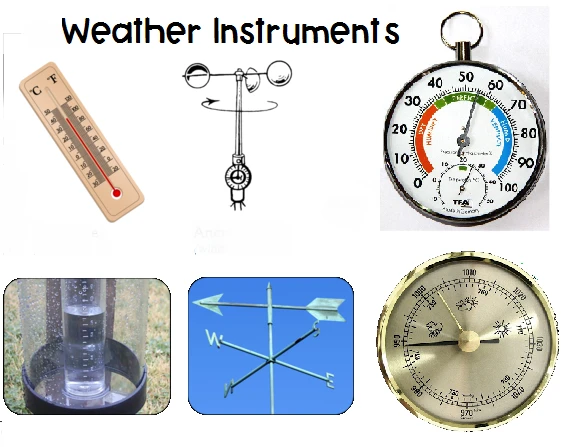
# Weather Gauges and Instruments for Accurate Meteorological Measurements
## Introduction to Weather Gauges
Weather gauges and instruments are essential tools for meteorologists, researchers, and weather enthusiasts alike. These devices provide accurate measurements of various atmospheric conditions, enabling us to understand and predict weather patterns more effectively.
## Essential Weather Instruments
### Thermometers
Thermometers measure air temperature, one of the most fundamental weather parameters. Modern digital thermometers provide precise readings, while traditional mercury or alcohol thermometers remain reliable options for many applications.
### Barometers
Barometers are crucial for measuring atmospheric pressure, which helps in forecasting weather changes. Mercury barometers were historically common, but aneroid and digital barometers are now widely used due to their portability and safety.
### Hygrometers
Hygrometers measure humidity levels in the air. Understanding humidity is vital for weather prediction, agricultural planning, and human comfort assessment. Modern electronic hygrometers offer quick and accurate readings.
## Precipitation Measurement Tools
### Rain Gauges
Rain gauges come in various designs to measure liquid precipitation. The standard tipping bucket rain gauge is widely used by meteorological stations, while simple graduated cylinders serve well for basic measurements.
### Snow Gauges
Specialized snow gauges measure snowfall accumulation. These often include heated collection surfaces to melt snow for accurate water equivalent measurements, crucial for hydrological studies.
## Wind Measurement Instruments
### Anemometers
Anemometers measure wind speed. Cup anemometers are common for general use, while ultrasonic anemometers provide more precise measurements without moving parts.
### Wind Vanes
Wind vanes indicate wind direction, typically mounted alongside anemometers. Modern electronic versions provide continuous digital readings that can be logged for analysis.
## Advanced Meteorological Instruments
### Weather Stations
Complete weather stations combine multiple instruments into integrated systems. These automated stations can measure temperature, humidity, pressure, wind, and precipitation simultaneously, often transmitting data remotely.
### Radiosondes
Radiosondes are instrument packages carried aloft by weather balloons to measure atmospheric parameters at various altitudes. These provide critical data for weather forecasting models.
## Choosing the Right Instruments
When selecting weather instruments, consider accuracy requirements, durability, and maintenance needs. Professional meteorological stations require high-precision calibrated instruments, while hobbyists might opt for more affordable consumer-grade options.
## Maintenance and Calibration
Regular maintenance and calibration are essential for accurate measurements. Instruments should be cleaned, checked for damage, and calibrated against known standards periodically to ensure reliable data collection.
## Conclusion
Weather gauges and instruments form the backbone of meteorological science. From simple backyard weather stations to sophisticated professional equipment, these tools help us understand our atmosphere and improve weather forecasting accuracy for the benefit of all.
Keyword: weather gauges instruments
